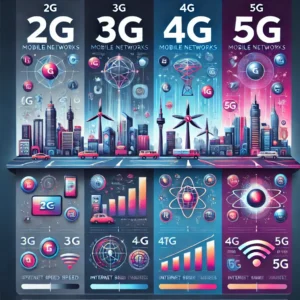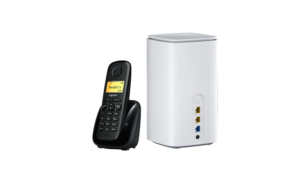Understanding the Difference Between 2G, 3G, 4G, and 5G Networks
In the ever-evolving world of mobile networks, each generation (or “G”) represents a leap in technology and capability. Let’s break down the differences between 2G, 3G, 4G, and 5G networks.
1. 2G (Second Generation)
Introduced: Early 1990s
Key Features:
- Digital voice calls (replacing analog).
- Basic text messaging (SMS) and picture messaging (MMS).
- Speeds up to 64 kbps.
Impact: Marked the shift from analog to digital communication, enabling more secure and reliable mobile connections.
2. 3G (Third Generation)
Introduced: Early 2000s
Key Features:
- Mobile internet and data services.
- Video calls and multimedia messaging.
- Speeds ranging from 200 kbps to 2 Mbps.
Impact: Brought mobile web browsing, email, and apps into the mainstream, setting the stage for the smartphone era.
3. 4G (Fourth Generation)
Introduced: Late 2000s
Key Features:
- High-speed internet for HD streaming and gaming.
- Support for VoIP (Voice over IP) and video conferencing.
- Speeds up to 100 Mbps – 1 Gbps.
Impact: Revolutionized mobile connectivity, enabling seamless streaming, large file downloads, and the rise of mobile-first services like ride-sharing and social media.
4. 5G (Fifth Generation)
Introduced: 2020s
Key Features:
- Ultra-high speeds up to 10 Gbps.
- Extremely low latency (1 ms), ideal for real-time applications.
- Support for IoT (Internet of Things) with massive device connectivity.
Impact: Enables futuristic technologies like smart cities, autonomous vehicles, augmented reality, and industrial automation. It’s designed for a hyper-connected world.
Key Differences at a Glance
| Feature | 2G | 3G | 4G | 5G |
|---|---|---|---|---|
| Speed | 64 kbps | 200 kbps – 2 Mbps | 100 Mbps – 1 Gbps | Up to 10 Gbps |
| Technology | Digital Voice | Mobile Internet | High-Speed Broadband | Ultra High-Speed, IoT |
| Latency | High | Moderate | Low | Ultra Low (1 ms) |
| Primary Use | Calls, SMS | Web Browsing | Streaming, Apps | Smart Tech, AR/VR |
Conclusion:
Each generation has paved the way for the next, addressing the growing demand for faster and more efficient communication. With 5G now in the spotlight, the future of connectivity promises to be faster, smarter, and more integrated than ever before.
What do you think about the leap from 2G to 5G? Share your thoughts! 🚀

